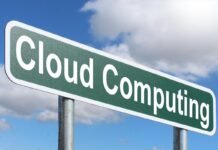Last Updated on February 13, 2024 by Nasir Hanif
Printed circuit boards (PCBs) are the most common method of electronic interconnect in modern electronic devices. They are key components in the design of countless devices in our daily lives. From smartphones to industrial machines, PCB Assembly is done everywhere. They’re used in everything from networking infrastructure to medical devices, as well as many other applications that require high-speed signal processing or control. In this article, we will discuss how they work and what you should know before you begin working with them.
Table of Contents
Components of Printed Circuit Board
The PCB is typically made from a thin sheet of nonconductive material, which is then coated with a layer of copper. This layer of copper is then etched away to create a circuit board pattern, which connects all the different components in the PCB factory.
The parts of a printed circuit board include:
– Microchips: These are typically used to control and regulate the flow of electricity through the PCB. They can also be used to store data and perform calculations.
– Resistors: These are used to limit current flow through specific areas of the PCB, such as circuits or individual devices.
– Switches: These allow users to turn on or off devices within the PCB. They can be either mechanical or electronic in nature and come in many different shapes and sizes depending on their intended use.
– Diodes: These devices allow current flow only in one direction through a circuit (i.e., from anode to cathode). They are used to prevent backflow from occurring during operation so that there’s no chance for short circuiting within any given device or component within the PCB itself.
Functionality of PCB
The PCB has many applications in electronics and computing, including single-board computers such as the Raspberry Pi and Arduino Uno. A PCB can be used as a central processing unit (CPU) or storage device in an embedded system. These systems are usually small and don’t have a monitor or keyboard like you would find on a desktop computer. The Raspberry Pi and Arduino Uno are two examples of embedded systems that use PCBs; they’re both very popular in education settings because they allow people to learn about programming without having to assemble their own circuits from scratch.
Phase 1 Designing
The PCB is designed and modeled by an expert. This is done in high definition so that you can see exactly how everything will look when it’s completed. The design is then sent to a factory where they create your PCB, as well as anything else you’ve ordered from them.
Phase 2 Making
This process takes place on a large machine that can lay down tracks, typically made of copper, between holes in the board. The machine performs this task by moving an etching head along X and Y axes at precise speeds; if any part of the apparatus is off by even one millimeter or less, this will cause problems with your circuit board later on.
To ensure that everything is running smoothly, each component must be set up correctly beforehand and tested for proper operation before manufacture begins.
Phase 3 Layer Etching
The next step after the PCB has been etched is to add additional layers of copper tracks. This process is called “double-sided routing.” The final parts of the board are connected by these new layers, which also allow for traces to be routed out from one side of an individual component to another.
Conclusion
Printed circuit boards are an essential part of modern life. They aid in the effective functioning of a variety of devices, including medical equipment and home appliances. PCBs provide a way for electrical components to be connected together so that they can work properly together
Apart from that if you want to know about circuit board then please visit our technology page






















